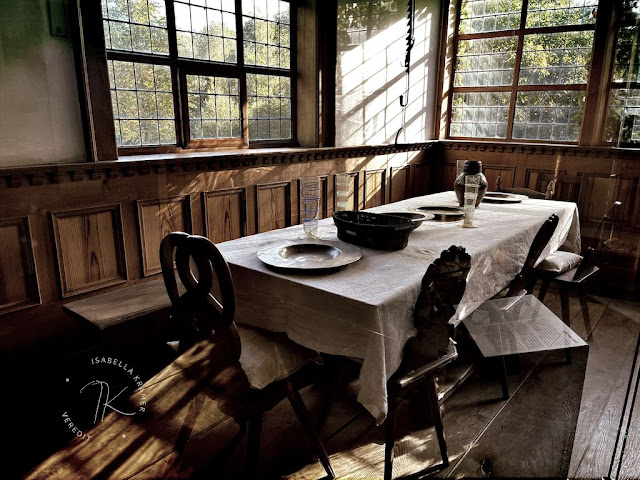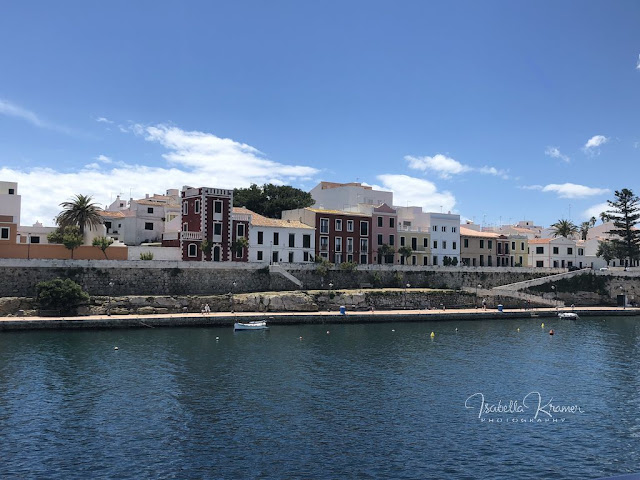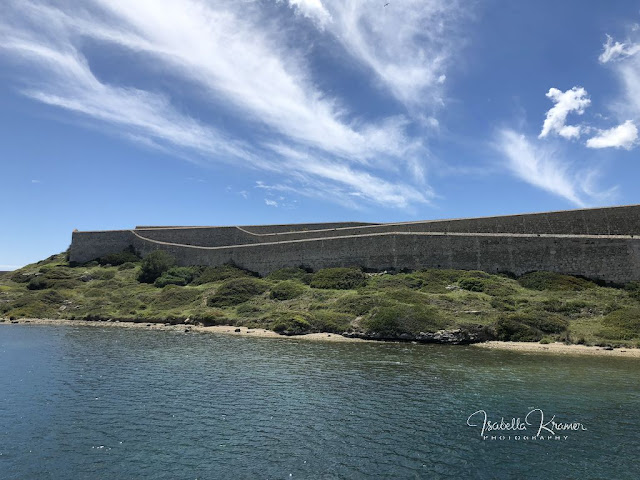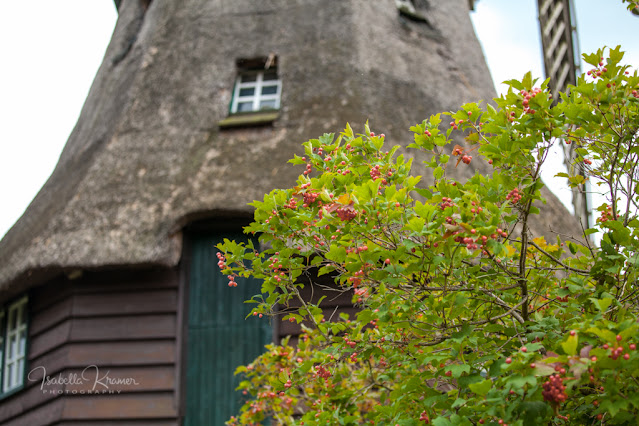Ein dicker Sack – den Bauer Bolte,
Der ihn zur Mühle tragen wollte,
Um auszuruhn, mal hingestellt
Dicht an ein reifes Ährenfeld –
Legt sich in würdevolle Falten
Und fängt 'ne Rede an zu halten.
Ich, sprach er, bin der volle Sack.
Ihr Ähren seid nur dünnes Pack.
Ich bin's, der euch auf dieser Welt
In Einigkeit zusammenhält.
Ich bin's, der hoch vonnöten ist,
Daß euch das Federvieh nicht frißt;
Ich, dessen hohe Fassungskraft
Euch schließlich in die Mühle schafft.
Verneigt euch tief, denn ich bin Der!
Was wäret ihr, wenn ich nicht wär?
Sanft rauschen die Ähren:
Du wärst ein leerer Schlauch, wenn wir nicht wären.
Wilhelm Busch, 1832 - 1908
Die Mühle stammt aus Westdorf im Landkreis Dithmarschen, die dort unter dem Namen Immanuel 1848 errichtet wurde. Sie gehörte zu den ersten drei Original-Mühlen, die im
Internationalen Mühlen-Museum, Gifhorn ihren Platz fanden. Sie wird als „Berg-“ oder auch „Kellerholländer“ bezeichnet.
Damit ist einerseits gemeint, dass die Mühle auf einem kleinen Hügel errichtet ist, und andererseits, dass sie einen Keller hat, in den Fuhrwerke einfahren konnten. Im Laufe ihrer Geschichte entwickelte sich die Anlage durch zahlreiche Umbauten zu einer hochtechnischen Mühle, u. a. mit automatischer Windrose. Die Jalousieflügel konnten der Windstärke angepasst werden. 1969 bot der letzte Müller in einer Zeitungsanzeige an, sie zu verschenken unter der Bedingung, dass sie wiederaufgebaut wird. Der Zeitungsverleger Axel Springer erwarb die Mühle und ließ sie restaurieren. Später schenkte er sie dem Mühlenmuseum, wo sie 1979 wieder aufgebaut wurde. (©wiki)
Die Holländerwindmühle (regional auch Kappenwindmühle, in den Niederlanden allgemein bovenkruier (Obendreher - d. h. mit drehbarer Haube oder Kappe) genannt) ist die modernste Entwicklung der klassischen Windmühle. Dieser Windmühlentyp verdrängte im 16. Jahrhundert, vor allem in den Niederlanden und in Norddeutschland, die vorher gebauten Bockwindmühlen.


































